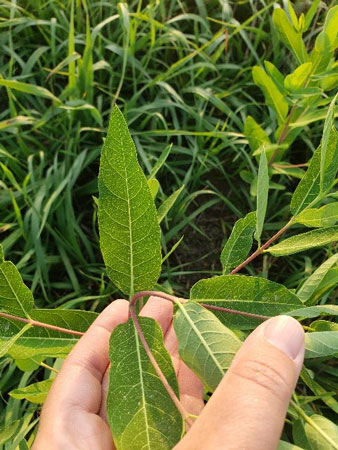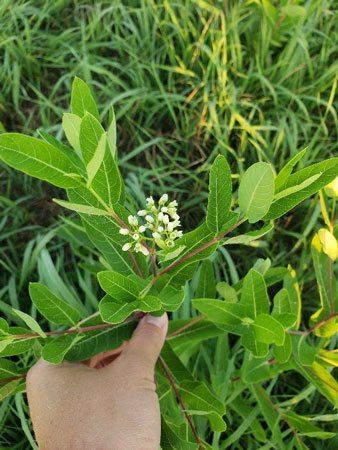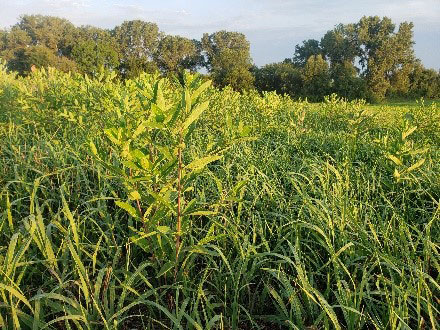We have received several questions about controlling hemp dogbane (Apocynum cannabinum) in pastures this summer, with many farmers and ranchers saying the weed is becoming more common and troublesome. This World of Weeds article will provide some information about hemp dogbane and offer some suggestions for management.
Ecology of Hemp dogbane
Hemp dogbane is a perennial plant that is native to North America. In fact, some Native Americans used fibers from the hemp dogbane stems to make fishing line, rope, and clothing. It is found in crop fields, pastures, and roadsides throughout the continental United States. Hemp dogbane spreads by both seeds and horizontal roots, which enable the plant to form dense colonies. Hemp dogbane does produce chemicals that could be harmful to cattle, but cattle will rarely graze green plants.
Identification
Upright stems can reach up to 6 feet tall, but more commonly are 3 to 4 feet tall. Stems are reddish-brown and branched in the top half of the plant. They contain a milky, white sap. Stems may or may not be hairy. Leaves have short petioles and are 2 to 5 inches long. They vary in shape, ranging from lanceolate (Figure 1) to egg-shaped.

Figure 1. Hemp dogbane leaves are oppositely arranged on the stem and can range from lanceolate, as shown here, to egg-shaped. Photo by Sarah Lancaster, K-State Research and Extension.
Small, white flowers can be found at the end of stems and branches from late spring to late summer (Figure 2).

Figure 2. Small, white flowers are found at the end of hemp dogbane stems and branches. Photo by Sarah Lancaster, K-State Research and Extension.
Narrow brown seeds with a tuft of hairs are produced in a sickle-shaped pod called a follicle that hangs below the stem and can be up to 4 to 8 inches long. However, seedling hemp dogbane is rarely seen in the field. Mature plants will regrow from long rhizomes that spread horizontally to form dense patches (Figure 3).

Figure 3. Hemp dogbane can be found in patches. Photo by Sarah Lancaster, K-State Research and Extension.
Hemp dogbane is sometimes confused with milkweed species. The stems of milkweed species are typically green and thicker than hemp dogbane, and will usually not be branched. Seed pods of milkweed species are upright teardrops.
Management options
As with most perennial weeds, complete control will likely require more than one treatment. Mowing can provide suppression and prevent seed production. Effective herbicides include products that contain fluroxypyr, such as PastureGard, dicamba, and combinations of 2,4-D + triclopyr, such as Crossbow. However, these products are not likely to provide complete control with a single application. Combining spring and/or summer mowing with a fall herbicide application may increase control. In pastures, spot spraying may be the most economical option if hemp dogbane patches are relatively isolated.
The use of trade names is for clarity to readers and does not imply endorsement of a particular product, nor does exclusion imply non-approval. Always consult the herbicide label for the most current use requirements.
Sarah Lancaster, Extension Weed Management Specialist
slancaster@ksu.edu
Walt Fick, Extension Range Management Specialist
whfick@ksu.edu
Bruno Pedreira, Southeast Area Agronomist
pedreira@ksu.edu